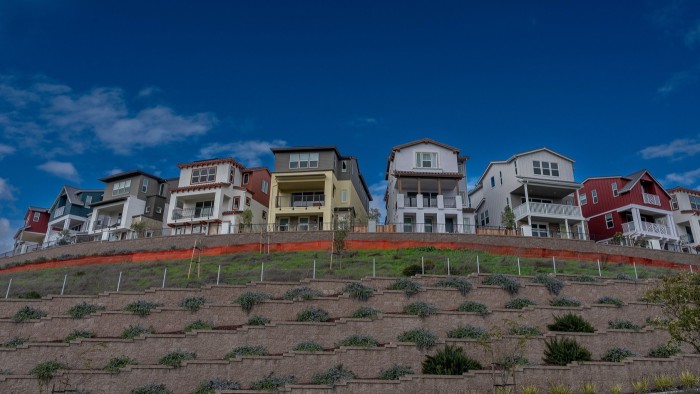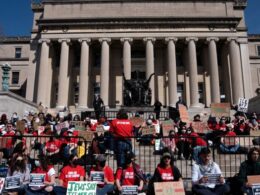Unlock the Editor’s Digest for free
Roula Khalaf, Editor of the FT, selects her favourite stories in this weekly newsletter.
California has curtailed a landmark environmental law that has been blamed for its chronic housing shortage and homelessness crisis, marking a major shift in a state known more for passing new regulations than cutting them.
Governor Gavin Newsom said the reforms would accelerate housing and infrastructure in the state. They marked “the most significant overhaul of California’s housing and environmental review laws in decades”, Newsom said, hailing it as a key element of California’s “abundance agenda”.
The regulations, known as the California Environmental Quality Act, were passed in 1970 by then-governor Ronald Reagan. The rules required state and local governments to perform environmental impact reviews before construction projects could go ahead.
But critics have blamed the CEQA law for preventing housing construction and other development, since opponents could mount lengthy challenges to delay projects for years. The rules have also been blamed for delaying or halting rail and infrastructure projects.
“CEQA allows for potentially unlimited litigation,” said Jerry Nickelsburg, director of UCLA’s Anderson economic forecast. “Production of homes in California just hasn’t been moving.”
As a result, California’s housing values are more than twice as high as the US median and rents are also significantly higher, according to statistics from California’s legislative analyst’s office.
An estimated 187,000 homeless people live in California, representing a quarter of the unhoused in the US, according to the Public Policy Institute of California.
The overhaul of the environmental rules comes as Los Angeles faces a massive rebuilding effort following devastating wildfires in January, which destroyed an estimated 16,000 houses and other structures.
Analysts say efforts to accelerate construction in California still face a number of challenges, including potential lumber shortages due to the Trump administration’s tariffs, and a lack of construction workers amid its mass deportation effort.
But Newsom said on Monday that the policy change would “speed up delivery of housing and infrastructure projects” while maintaining protections for natural spaces. He had made housing construction a centrepiece of his first campaign for governor, pledging to build 3.5mn houses — a goal that his administration has not come close to reaching.
He will leave office after two terms in 2027, and is widely expected to seek the Democratic nomination for president.
Source link









